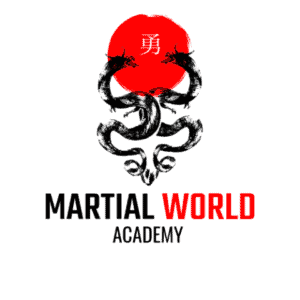This is part 4 of our “Karate Training at Home” series. Click these links for Part 1, Part 2, & Part 3
“Is weight lifting good for martial arts?” If you asked this question to one black belt he’ll tell you it’s a waste of time. You ask it to another black belt and he’ll tell you it is the secret to his success. So who do you follow?
In general, weightlifting is highly beneficial to martial artists. Increased strength provides more powerful strikes and allows for greater grappling ability as well. Weightlifting will also make you more resistant to injury from sparring or training.
This only leads to more questions, though. Like, what type of weight lifting should you focus on? How much rest do you need between lifting days? Will getting really strong make you bulky and slow? Etc. We’ll tackle each of these and more in the following article.
Does Weightlifting Help with Martial Arts?
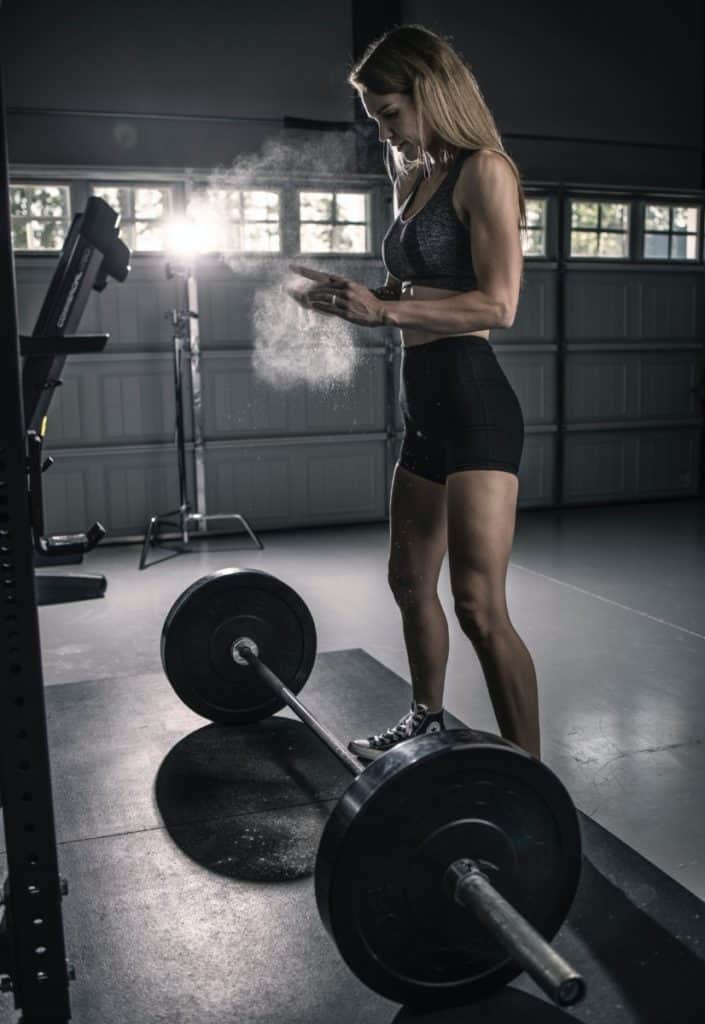
Every athletic endeavor is improved with some degree of weight training and martial arts is no different. You will be able to hit harder, move faster, resist damage, and heal from injury more quickly, all due to incorporating a weight training regimen.
Hitting harder and moving faster are obvious benefits, but how exactly does weight training help a martial artist resist damage? It’s about mass. If large truck and a small car collide, the truck will suffer comparatively little damage, even though both machines are made of steel. This is because the truck has greater mass and thus its momentum is merely slowed when impact occurs, rather than being completely stopped in the case of the small car. And it is the same with human body.
You will also enjoy a greater ability to heal from your injuries too. Imagine you took a savage thigh kick that left your leg deeply bruised. In order to heal that injury your body will be sending lots of blood to the area. Not just to remove damaged and destroyed cells, but also to provide nutrients in order to build new ones. And a weight lifter will enjoy a swifter recovery due to his larger muscles having a greater supply of blood due in large part to the increased size of his veins and arteries; a byproduct of weight training.
You will also find that your martial arts will help you with weight lifting as well. Your ability to perform under a heavy bar will be impacted by your ability to focus. And, hopefully, your martial arts training has imbued you with exactly this kind of focus.
What are the Negative Effects of Weightlifting?
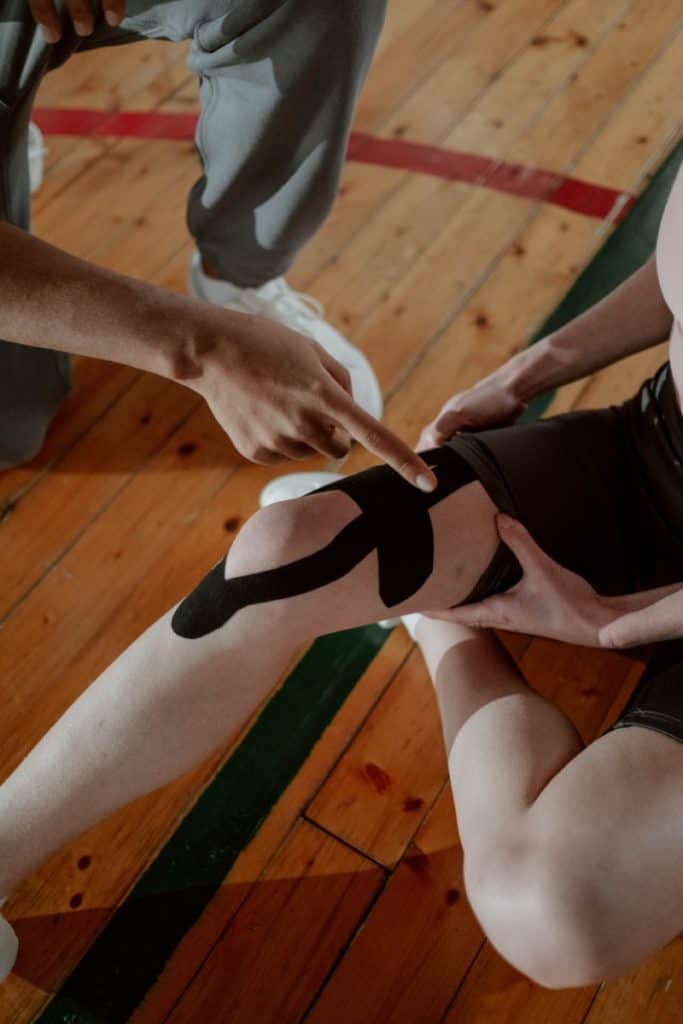
Of course, there are a number of negative effects and risks where to comes to weight lifting. Some of those might include getting injured by lifting too much, or lifting with poor form. And, while weight training can actually help with this issue long term, you can also experience a momentary increase in blood pressure while weight lifting, and this is something to consider for millions of people who already have chronically high blood pressure. Additionally, the repeated act of lifting heavy holds the risk of shortening your muscle fibers and your ligaments, making you less flexible if you take no care to stretch them.
And if you are combining weight training and martial arts, you do run the risk of over-training your body and suffering an injury. Though this can be said whether that happens under the bar or on the mat.
Of course, nearly all of these negative effects are avoided simply by educating yourself as a lifter, getting a coach, developing or adopting a comprehensive lifting routine (including warm up, cool down, and stretching), and providing adequate rest and nutrition to support recovery (more on this later).
What are the Most Common Weightlifting Myths?
- “Lifting weights is dangerous” – This is true to a degree, but only as true as saying “martial arts practice is dangerous“. All physical activity contains an element of risk. Fortunately there is a wealth of free and paid information out there to help you reduce or eliminate most risks.
- “Lifting will make you big and bulky” – For many men, martial artist or not, this would be a wonderful “problem” to have. But alas, it’s not true; and this will be a relief to most women who are curious about lifting weights. While lifting does result in muscular growth, and thus, an increase in size, the “bulky” appearance is the result of specific type of weight training (more on this later), diet, supplementation, and often a butt-load of steroids.
- “Weight lifting decreases flexibility” – Mentioned in the previous section, this is a prime concern for martial artists who fear that getting strong will mean losing agility or the ability to kick another man in the face. Fortunately, this myth is only true if you are careless. In fact, this study found that strength training can increase flexibility.
- “You’re too old to start weight training” – In the words of Indiana Jones, “It’s not the years, it’s the mileage“. A well preserved 60 year old body is, in many ways, better suited for weight lifting than an abused one of half that age. The same can be said about age and martial arts training. And research suggests that weight lifting is extremely beneficial for aging adults, too.
- “Lifting weights is bad for your joints” – This one is wrong for the same reason as the first myth: anything done wrongly can be dangerous. But if you’re following a properly developed program, and you are lifting with good form, your joints will actually grow stronger just by responding to the added stress.
I wrote an entire article on how to train as an older person, click this link to read it.
What are the Different Kinds of Weightlifting?
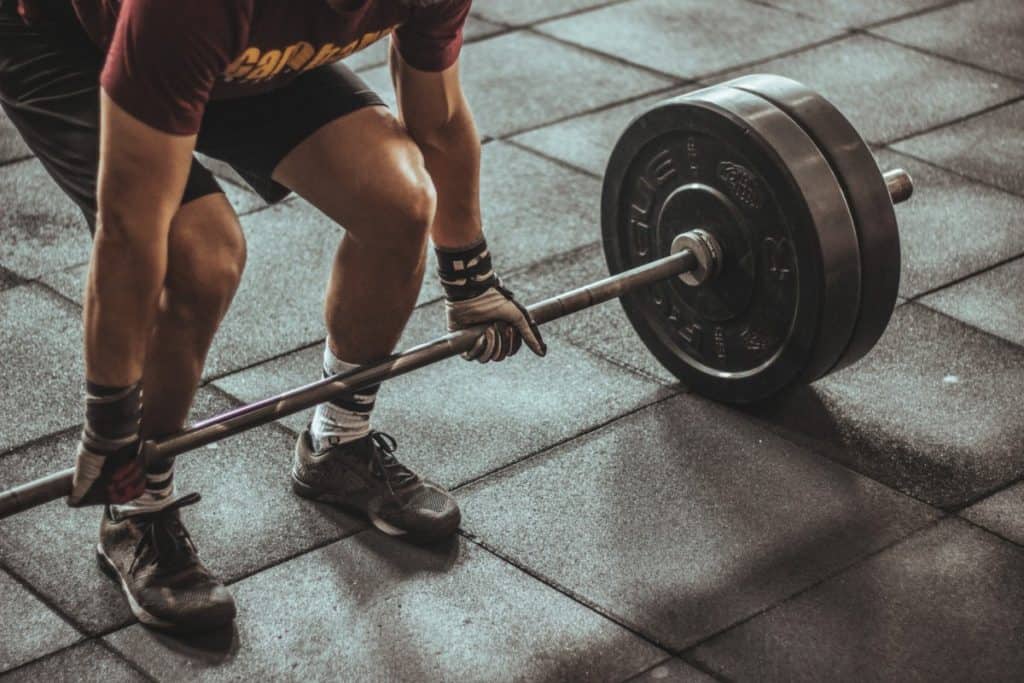
A car is a car, right? Well, that depends. What do you need it to do? If, for example, you’re going to be hauling lumber or taking it off road, I would suggest you not use your VW Beetle and opt for something more rugged.
It is the same with weight lifting. Different styles of lifting have been developed to achieve certain goals. These are the 5 main styles you’ll see and what they are best at achieving:
- Bodybuilding – This is what most people think of when they think “weight lifting”. They think Arnold Schwarzenegger, “Mr. Universe”, He-Man. In bodybuilding you use isolation exercises (exercises that target one muscle (like the bicep curl) because your goal is purely aesthetics and muscular size. Because of this, while better than no weight training at all, it is not best suited for a martial artist looking to improve his performance in the dojo or on the mat.
- Power Lifting – “Slow and steady wins the race“, says this type of weight training. Here, the focus is on “compound lifts” (involving several muscle groups at once), rather than isolation exercises, and lifting the maximum amount of weight in a slow and controlled manner. This form of lifting stresses safety (which puts it at the top of my list) and strength, which will help the naturally lean martial artist.
- Olympic Lifting – This form is similar to power lifting but, since it focuses on lifting from the ground to above one’s head, these lifts must be highly explosive. As with power lifting, these are compound lifts the train many parts of the body to work together. This is a benefit for any martial artist.
- “Crossfit” – This recently popular form of weight training emphasizes medium weights and high volume of reps for a cardiovascular benefit along with strength. And while it can help generate explosive power, I am no fan of the seemingly casual approach to gym safety endemic in this brand of lifting. Nor the ease with which anyone can become a “coach”.
- Calisthenics – Ah, good old body weight exercise. This type of training goes way beyond pushups and sit ups and in many ways can be more difficult than lifting weights when performing expert level exercises. Here you will develop a more complete mastery over your own body and, because calisthenics requires high volume of reps, high endurance as well. Every martial artist should have at least one toe in calisthenics training.
How can You Learn more about Weight Training?

- Decide which type of weight lifting is going to help you reach your goal.
- Get educated about how to perform your lifts safely and with proper form.
- Seek out a reputable coach’s knowledge. In person, online, or through books.
- Experience the difference between “train to failure” and to just “tired”.
- Ignore your warm up at your own peril.
- Avoid information overload.
- Avoid switching lifting styles arbitrarily.
- Lift only 3 days a week unless otherwise instructed by your coach’s program.
- Have the right attitude.
Having the “right attitude” deserves it’s own post, honestly. You must understand that you are learning an entirely new sport; one with risk of bodily harm if you approach it too casually.
So what is the “right attitude”? I call it the “White Belt Mind”. Think back to when you first started at your dojo. Whether you were a kid or an adult I bet you were eager to learn, eager to train. I bet you watched a ton of Youtube videos, bought and read a lot of martial arts books, too, right? This same mindset must be applied to learning about weightlifting as well.
Now, with that said, there is a danger you need to be aware of: online idiots. You’ve seen them, I’m certain. In the martial arts world these are the guys who demonstrate a “gun disarm” that absolutely will get you shot. The guy who purports to reveal to you his secret chi technique (if you enroll in his course for $199). Or almost anyone using Systema.
In the world of weightlifting these online idiots are more often found in quick-format social media like Tik-Tok or Instagram. They’re usually very young (teenagers or early 20’s), and you can often find them doing some bizarre or wildly unsafe “variant” on a classic lift.
Why do they do this? Because to be successful in social media means constantly posting content, no matter how idiotic or dangerous. Avoid these idiots at all costs. And not just these idiots, but also the charlatans that promise you quicker results if you just buy his pill, powder, or potion. Avoid them all. The one exception I make to this rule is with basic creatine. That stuff is decades old and has tons of scientific studies proving its safety and effectiveness.
Most Important Lifts for Martial Artists
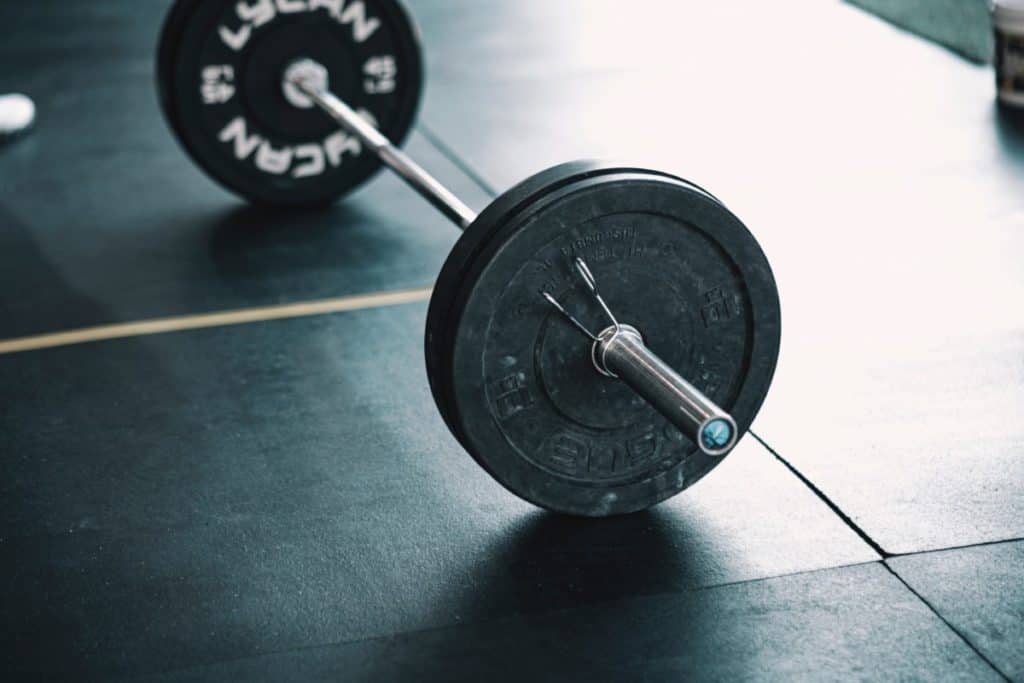
I wasn’t going to leave you without a list of exercises to start with. But don’t take this list as gospel. In fact, I strongly encourage you to evaluate these and swap them out as you deem fit. For example, you might swap out the bench press for simple push ups. Or the barbell squat for jump squats to focus on explosiveness rather than strength. Your routine will be determined by your individual goals.
- Bench Press – Builds the pectoral muscles and triceps. Having a built chest allows you to absorb more strikes without injury, and stronger triceps are important for a more powerful punch.
- Barbell Squats – The power of every kick you will ever perform is, in part, determined by the strength of your legs. And if your style uses low kicks, then you’ll be glad for all the natural “padding” that squats will put on your legs.
- Crunches – By “crunches” I mean “a complete ab routine”; one that targets upper, middle, lower, and oblique abdominal muscles. Aside from the wonderful side benefit of making you sexier, a strong core is like armor when you’re opponent is raining body shots upon you.
- Farmer Walk – Crucial for grapplers is a powerful grip. A weak grip, even if you’re a better skilled fighter, can mean defeat.
- Deadlift – Probably the best compound lift around. Strong glutes, strong back, strong grip. All essential no matter what kind of fighter you are.
- Military Press – Not only are strong shoulders important for a strong punch, but you’ll be glad for the extra strength when you’re exhausted but you still need to keep your hands up to guard your head.
- Medicine Ball Throw – One-hand, two-hand, over head, under hand… No matter how you are doing it, strengthening the kinetic chain involved in throwing is important to every martial artist. (For a burn out, try throwing it far and sprinting to it before picking it up and throwing it back. Try that for as many reps as you can. You’ll hate me later).
- Rows – Can’t ignore your back, especially if you’re an office jockey like most of us. A strong back is especially important for grappling styles like Judo, BJJ, and Sambo.
- Running – Ahh! Tricked you! Running isn’t lifting weights at all! But, why running? Because part of martial arts training is learning to keep going, even when your entire body is screaming for you to stop. Running, by its very nature, trains this form of discipline.
How much Rest between Workouts?

Now to the part where my younger readers will probably ignore: rest. And it’s a shame that they will because rest is absolutely critical when it comes to building muscle. No rest, no gains. This is because the body doesn’t get stronger while lifting, it gets stronger by resting after it has lifted! Worse still, you’re not just lifting weights, you’re also putting in hours and hours per week in the dojo or on the mat. Your body is literally aching for some rest and it will force you to, if it must.
So how much rest? This will depend on a number of factors such as your age, gender, general health, type of martial art, type of weightlifting, and your quality of sleep. This means that you’ll need to dial it in as you go and keep a workout journal so you can track important your rest and sleep.
For myself, my martial arts training is typically a Monday, Wednesday, Friday schedule, while my weight lifting is Tuesday, Thursday, Saturday. Sunday I leave completely free and I always try to sleep in so I can catch up on as much extra recovery as possible.
Occasionally I’ll hear that my schedule is too aggressive and that I need to incorporate more rest. I’m sure they’ll be right someday, too. But I’ve arrived at the schedule over a long period of time evaluating my growth, performance, and overall quality of life. I think the reasons I can do a 6-day week is because I’m under 40, eat clean, and sleep like the dead. If you’re a beginner, you too will gain this degree of kinesthetic knowledge, but it does take time.
One quick note… your own schedule will likely differ from mine, and it should. You and I are different people, different fighters, and our goals are likely different too. So don’t take my 6-day a week schedule as some kind of benchmark. We might someday be competitors on the mat, but not here. So start out by lifting three days a week, every other day, and pay close attention to how your body feels each day. Make adjustments to your nutrition and sleep habits. You’ll start to learn what your individual machine requires and customize your training schedule to accommodate it.
Final Round
Hopefully by now we have shattered the old myth about martial arts and weight lifting being incompatible. In fact, by now I hope to have shown weight lifting to be absolutely integral to anyone looking to supplement their karate training at home.
The benefits of weightlifting, as a martial artist, are multi-faceted. You’ll gain increased resilience to injury, a greater ability to recover from exertion, a stronger body to dish out powerful blows, and even an improved mental clarity as well. So, go pick up your dumbbell and get started!
Photo Attribution
- Photo by Sam Sabourin on Unsplash
- Photo by Alexander Jawfox on Unsplash
- Photo by cottonbro from Pexels
- Photo by Alora Griffiths on Unsplash
- Photo by Pavel Danilyuk from Pexels
- Photo by Eduardo Cano Photo Co. on Unsplash
- Photo by Adi Goldstein on Unsplash
- Photo by Victor Freitas on Unsplash
